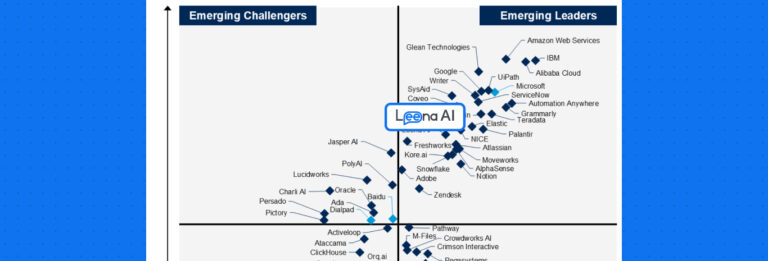The human resources department is one of the most important organizational assets in this era of digital transformation and the continued evolution of employee experiences. They are responsible for providing employees the experience they deserve and are the go-to people for all their queries. From benefits and performance reviews to PTO requests — employees directly reach out to HR teams for help. That’s why HRs need a robust service delivery system to support their employees whenever needed.
HR service delivery is all about providing services or support to employees throughout their journey — from the moment they get hired till they leave the organization. Just as customers require support service representatives when buying your product or service, employees desire a well-executed HR service delivery to solve their employment-related issues.
However, the way you implement your HR service delivery solution has a massive impact on the employee experience and engagement.
Why should you transform your HR service delivery?

Before we dive into the best practices of HR service delivery, let’s look at how your HR team can benefit from implementing an effective HR model in the organization:
Improves employee experience
HR service delivery aims to resolve queries throughout the employee life cycle. Further, it helps provide continuous and positive support regarding the issues with accurate information. It makes employees more efficient at work and promotes a better employee experience and engagement within your organization.
Boosts productivity
Automating tasks like submitting requests on a portal, sending the queries to the right HR team member, and tracking the progress of these raised tickets streamlines the workflow. When employees have visibility on the status of their issues, they feel more focused on their day-to-day tasks.
Further, the availability of a self-service portal or knowledge base allows the HR department to avoid wasting time on repeated queries and instead focus on answering more complex requests. Simply put, they can provide their services more efficiently and answer more questions in less time.
Saves time and cost
Using technology to standardize HR operations reduces confusion around internal processes and minimizes employees’ queries significantly. As a result, HRs have more time for coping with in-depth situations to ensure the success of the company and its employees. Further, the HR service delivery system lowers HR costs with faster responses and resolutions.
Better HR analytics and reporting
A power-packed HR service delivery system tracks and analyzes data and metrics regarding employee issues. Using this data, HR teams can make informed decisions for improving internal processes and procedures related to employee service management.
Such systems can measure and monitor KPIs — such as average resolution time, the number of tickets resolved in a week, month, etc. — which are crucial for understanding the performance of your HR teams.
Best practices for revamping your HR service delivery
HR services play a massive role in shaping how employees feel about your company. So, your HR service delivery best practices should be effective enough to leave employees with a positive impression and confidence that their queries will get resolved. Here’s how you can do it:
Use the right technology
Technology is the cornerstone of HR service delivery. With the right tools, HR service delivery systems can help design and manage HR workflows, quickly resolve cases, and build a knowledge base of employee resources. Further, they make the HR processes more efficient and enhance the employee experience.
Ensure that you select the right cloud-based tech to make service delivery accessible and consistent. These tools should integrate with your existing HR platforms so that all crucial information, like documents, forms, or policies, is available on a single portal.
Find a solution that complements your company size and can be scaled as the company grows.
Enable employee self-service
Your HR team gets tons of employee queries daily. And, if they take time to answer each request via email or online chat, they won’t be able to focus on other complex issues. Further, employees nowadays want the convenience of receiving a relevant answer within seconds. They no longer have the patience to wait for an HR representative to resolve their tickets.
So, instead of relying on this back-and-forth traditional method, HR teams need to make all the crucial information readily available to let employees find a solution to their problems themselves as and when they arise.
It is where enabling employee self-service and building a knowledge base becomes critical. Employees can find answers to their routine questions instantly without reaching out to the HR teams. Moreover, they can search for forms and policies without sorting through irrelevant information.
Apply the what-who-how framework
Your HR service delivery model must align with your overall HR strategy. Therefore, when planning your HR service delivery, ask yourself the following questions:
-
What:
What type of HR services are you offering, and what steps should you take for the same?
-
Who:
Who in HR (structure or role of the HR personnel) will deliver the service(s)? What skills and competencies are required to be developed or brought in?
-
How:
How will you deliver the service? What processes, tools, and technology will you need to do it effectively?
Have transparency
No matter how detailed your knowledge base is, some questions always require employees to submit a request or contact a live HR representative for personalized support. For such complex cases, transparency is crucial to keep the employee in sync with the workflow.
Employees want to stay up-to-date on the progress of their requests. They want transparency and visibility on their tickets raised.
In other words, just like you can track the location of your Amazon package, you can offer the same convenience to your employees to track the status of their raised requests.
Don’t lose the personal connect
Even though HR service delivery focuses on tools and technology, don’t forget the importance of a personal or human touch. Employees may prefer finding the answers to their problems at their fingertips. However, sometimes they will need to interact with an actual person. After all, HR is about working with “humans,” and there’s no substitute for human interaction for a satisfying employee experience.
Therefore, always provide your workers with ways to contact your HR team to resolve their complex queries. Also, make sure the employees have insights into the progress of their case, assuring them that their issues are being valued and taken seriously.
Have a scalable model
Your HR service delivery system must grow with you as your organization’s needs change. A scalable solution will help you provide excellent HR service to your employees when your business expands over time. In addition, ensure that it is adaptable to meet the business requirements during inevitable or unexpected occurrences.
Ask yourself these questions while selecting your HR service delivery system:
- Can you scale up this HR system without a high cost?
- Can you scale down this HR system when required?
Automating HR service delivery with AI

Manually handling the employee queries requires sending emails back and forth between the employees and the HR team. It is where automating the HR delivery system with artificial intelligence can help.
With AI-powered HR service delivery, you can automate the HR processes to improve the efficiency of your HR teams and help employees get answers to their queries faster.
Here are a few features it offers:
Delivers employee service within seconds
An AI-enabled HR service delivery system can automatically respond to employees’ routine queries and requests and speed up the resolution time, allowing your HR professionals to focus on more critical issues.
It works great, especially for large organizations dealing with thousands of requests each month. The self-service option allows employees to find information themselves without contacting HR representatives directly. This way, they get support within seconds, giving more time to HRs to help employees thrive in the business.
Designs experiences
With HR service delivery automation, you can design meaningful, personalized experiences on employees’ special occasions, such as onboarding, promotion, internal transfer, and return to the office.
By analyzing the previous metrics, such as common questions regarding onboarding, return to office plan, etc., you can proactively predict and resolve all the queries employees might have and offer them all the resources they need.
Enables better decisions with real-time analytics
AI-enabled HR service delivery systems have the potential to review the number and types of employee requests and queries. You can track multiple key point indicators (KPIs), such as the volume of the request per week/month, average resolution time, representatives’ performance, the percentage of tickets resolved, etc.
It helps HR teams understand what’s working and what’s not to make informed decisions on improving HR processes and further enhance the employee experience.
Takes the HR helpdesk to any communication channel
An automated HR service delivery system integrates seamlessly with your existing communication tools and allows your HR team to view and resolve all employee tickets on a single platform. It prevents employees from hunting the information, documents, and ticket-related messages through multiple platforms and helps them focus on other crucial matters.
Know how to choose the right HR helpdesk software for your organization from here.
Bottom line
Nowadays, employees expect the same kind of experience at their workplace as they receive as customers. They must have a place to turn to address their questions and concerns regarding PTO requests, benefits, or HR policies.
Therefore, it’s crucial to have an HR service delivery up and running as it can make a meaningful impact on your employees’ experience and the overall workplace environment. If you are already using one, it’s essential to revisit your HR service delivery model after a fixed period and ensure it remains updated and customized as per the needs of your employees.
Want to automate your HR service delivery system and deliver the best employee service across the lifecycle? Book a demo with our experts today!






